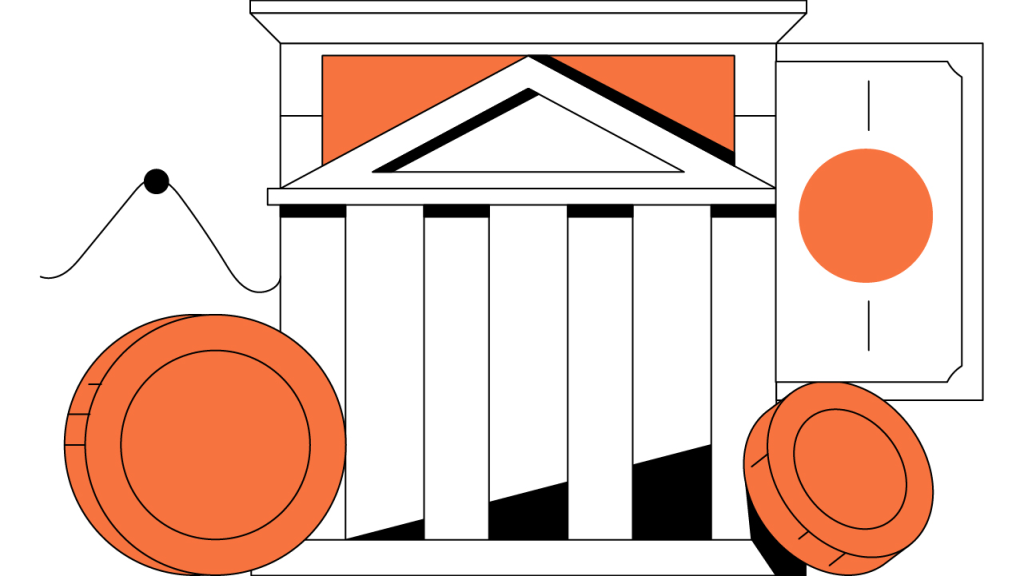What Are Central Bank Digital Currencies (CBDCs)?
CBDCs are not cryptocurrencies, even if built on blockchain. They are centralized — controlled by central banks — while crypto is famously decentralized.
Updated March 10, 2023 • 2 min read

Summary
Central banks are responding to the rise of cryptocurrencies and other digital payment technologies by exploring adoption of central bank digital currencies (CBDCs). A CBDC is a digital representation of central bank-issued money that can be built on a blockchain or distributed ledger. Despite potentially sharing some architecture with cryptocurrencies, CBDCs are not considered cryptocurrencies because of certain technical differences and because they are controlled by a central authority.
A central bank digital currency (CBDC) is a digital representation of a country’s government-issued, central bank-controlled money. CBDCs are different from the digital reserves and settlement account balances that central banks, commercial banks, and other financial institutions hold. The design of CBDCs can vary significantly in terms of access, privacy, and underlying architecture, but some central banks have proposed building their CBDCs on a blockchain protocol or distributed ledger.
Central Bank Digital Currency Isn’t Crypto
Even in circumstances where CBDCs are blockchain-based, they are not cryptocurrencies because they are controlled by centralized authorities — central banks. A cryptocurrency, by definition, is not maintained by a centralized entity, but is instead managed by a decentralized network of nodes that reach agreements on the state of the ledger through a consensus mechanism.
Characteristics of CBDCs
At the time of this writing, CBDCs have only been proposed by central banks and have not yet been implemented for country- or region-specific use, beyond closely monitored private trials. To date, more than 20 varying CBDC prototypes have been created. In particular, the digital yuan in China and the Bahamanian Sand Dollar in the Caribbean appear the closest CBDCs to being officially released.
Central banks have proposed varying degrees of accessibility for CBDCs. For example, some have considered creating a CBDC that would be available to the general public, particularly in the event that the use of cash continues to decline substantially. The Bank of International Settlements (BIS) has argued that introducing a CBDC into this context could diversify retail payment systems and bolster those systems’ ability to bounce back if technological issues interfered with private payment infrastructures. Central banks have also proposed restricting CBDC access to financial institutions that hold reserves at those banks. In this case, the CBDC would be designed to improve wholesale payment, clearing, and settlement systems between banks.
Central banks have entertained a variety of underlying architectures for CBDCs, including Distributed Ledger Technology (DLT) and blockchain, a subset of DLT. Distributed ledgers are shared, decentralized databases that are maintained by multiple nodes without a central authority. A blockchain is a peer-to-peer network that maintains a record of transactions by timestamping them and recording them into blocks, which are linked in a chain and cannot be easily altered. Central banks have cautioned that the use of a blockchain or DLT could result in confidentiality issues (because of the public nature of the ledgers) and scalability challenges.
Central banks have also debated whether people should be allowed to transact anonymously with CBDCs. Physical central bank money (cash) is the most anonymous payment method, but some monetary authorities have rejected the idea that digital central bank money should retain this characteristic.
A 2020 survey conducted by the London-based journal Central Banking found that 46 countries were researching the potential adoption of CBDCs including China, the United Kingdom, and the European Central Bank, suggesting that money as we know it may soon look quite different.
Cryptopedia does not guarantee the reliability of the Site content and shall not be held liable for any errors, omissions, or inaccuracies. The opinions and views expressed in any Cryptopedia article are solely those of the author(s) and do not reflect the opinions of Gemini or its management. The information provided on the Site is for informational purposes only, and it does not constitute an endorsement of any of the products and services discussed or investment, financial, or trading advice. A qualified professional should be consulted prior to making financial decisions. Please visit our Cryptopedia Site Policy to learn more.

Is this article helpful?


